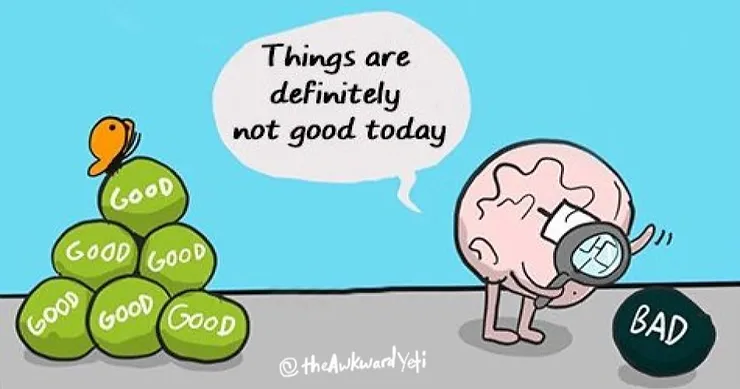3rd April, 2023 •

Written by Higson
25th September, 2020 • 4 min

Four strategies to help you reduce your jargon and communicate clearly
Take a moment to consider what each of these mean:
Jargon is created to improve communication. A new word or phrase used by a group of people to describe a situation or concept. Once you know the jargon, it simplifies the message.
For example, in the list above you may have been familiar with some business jargon: ‘best practice,’ – the best way to do something – ‘bang for the buck’ – to get the most value for your money – or ‘the 9-5’ – the standard work day.
The problem is, you need to be introduced to jargon to know what it means.
For example, you may have been less certain of the meaning of others on the list: ‘berries and cherries,’ – a police jargon to mean the sirens on top of a police car – ‘Problematize’ – academic jargon to show that something is an issue or make something into an issue – or ‘smoke-filled room’: political jargon for a place behind-the-scenes where (sometimes devious) political negotiations occur.
Jargon is meaningless to people outside the group. It’s an ‘insider’s language.’ And it only improves communication when everyone involved in the conversation is aware of it’s meaning.
If you use it with someone who is unaware, jargon can confuse and dilute our message. This can alienate the person we are talking to. They may feel distrustful, become confused and lose interest. Too much jargon, and they can tune out.
Often it’s our clients who are not tuned in to our business jargon.
For example, how clear is this message for a client: ‘Let’s drill down on your account and I’ll put a bespoke piece together about how you can secure that low hanging fruit.’
And when communicating to clients, it is in our best interests to be clear. It is not in our best interest to confuse, bore or make our client feel like an outsider.
Using jargon can cost us. It can cost us time – it takes longer to explain a product or service. It can cost us money – when clients decide to go with another provider that they trust, that makes them feel included.
The issue is, sometimes we don’t know we are using jargon. We become so used to the terminology we use that it becomes hard to tell what is jargon and what isn’t.
So here are four areas to focus on to help us avoid using jargon with our clients and communicate clearly:
1. Imagine you have gone back in time
A useful way to test yourself on your jargon is to imagine giving your ‘elevator pitch’ (this jargon means a summary of an idea that can be given in the time an elevator moves between floors – around thirty seconds) to someone who lived one hundred years ago.
To achieve this, you will have to do two things. First, you have to simplify and refine your message to fit into the thirty second time frame. Second, you have to remove any words that could not be understood in the 1920s. Jargon words.
Challenge yourself to remove jargon from how you describe products, services and concepts, too. Give it a go, it is harder than you might think.

2. Use stories to explain your message
What if what you are describing to a client is complex? And there seem to be few words to describe my product or service that are not jargon?
Using stories can help. Stories can help take the most complex of ideas and reframe to something easier to understand. They become more tangible, realistic and engaging when they are told in a story.
For example, in the film The Big Short – storytelling is used to help the audience understand complex financial language. Actor and performer Selena Gomez and Expert in behavioural economics Richard H. Thaler explains to the audience what a ‘synthetic CDOs’ is.
Here is investopedia’s explanation: “A synthetic CDO, sometimes called a collateralized debt obligation, invests in noncash assets to obtain exposure to a portfolio of fixed-income assets.” This is full of business jargon and hard to understand without spending some time thinking (and googling).
On the other hand, watch this clip. Selena starts by saying…‘let’s say I bet $10 million on a blackjack hand …’? Told in a story, it is far easier to grasp.
Try this out. It will help you reduce jargon and make your products and services seem more relatable.
3. Remember: keeping it simple is smarter
Often we add in jargon words believing they make us sound more ‘intelligent’ or ‘persuasive’. It is often the opposite. It can dilute the clarity of your message.
For example, ‘This project has a lot of moving parts. Let’s drill down and put a bespoke report together about how we can first secure that low hanging fruit.’ Even if you know the meaning of these individual pieces of jargon, used in quick succession mystifies the meaning.
Simplified, without jargon: ‘There is a lot going on in this project. Let’s first decide what the easiest tasks are that will have a positive impact and start there.
The greatest communicators are clear and concise, and can communicate to any audience. As Mark Twain said, ‘if I had time, I would have written a shorter letter.’
So keep it simple. Challenge yourself to use clear, simple language. Talk to people clearly and plainly.
4. Use the ‘readable website’
We can check if our writing is clear by using the Readable website. Simply paste your text in. It will give you an indication of how easy your text is to read using the Flesch reading score.
Aiming for a Flesch score of between 8-10 will mean your text will be understood by 85% of the population. Government bodies, e-commerce sites and content marketers use it to make sure their written communication is clear. The better your score, the more engaging your words.
Importantly, Readable can indicate any jargon in your text. So if you are emailing a client, you can check it first. Or you could paste in a draft pitch script before presenting.
Using any of these tips we can challenge the amount of jargon we use and communicate compellingly. Get in touch with us if you would like to learn more about ways to improve your communication.